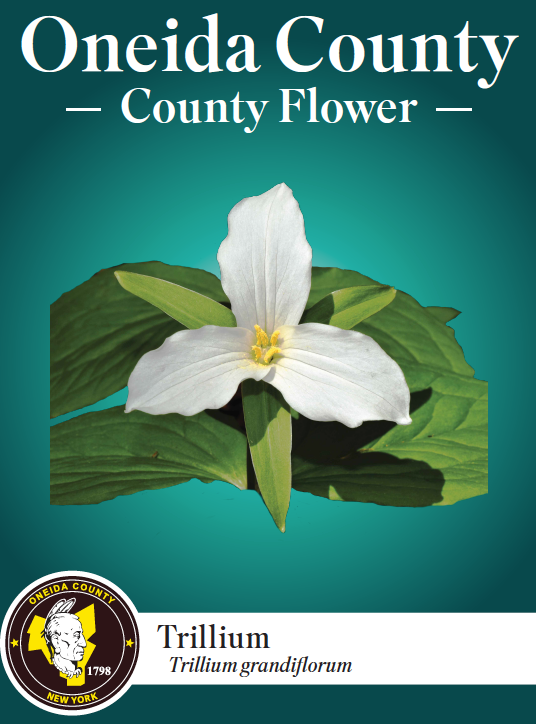Gardening column: Trilliums are worth seeing when they bloom. What to look for
It’s springtime!
The sun is shining, the birds are twittering. It’s time to grab your camera and head for the woodlands. You’re on your way to find a real spring treasure…. Trilliums!
There’s a good chance you’ll see some robins along the way because these beautiful wildflowers are also known as Wake Robins. Both the robin and the trillium hallmark the early days of spring.
The trillium is a native plant found in almost all the counties of New York State as well as the Eastern states and Canada. Most common in this area is the white trillium (Trillium grandiflorum).

As you walk through the woods you may come across a large clump of showy three-petaled blooms. You might see a gathering of trilliums along the bank of a creek or covering the side of a hill. Sometimes you’ll find a small clump near an old fallen tree.
It's easy to identify these showy flowers. A member of the lily family, it grows to about 8 or more inches above the ground. It has three wavy-edged white petals framed by a trio of larger leaf-like bracts.
The central stamens are a soft yellow. Because of the triplet design, the trillium has been nicknamed 'Trinity' and 'American Shamrock.' Another popular nickname is “Wood Lily”.
Not all trilliums in New York are white. The Red Trillium (Trillium Erectus) is a dark red-purplish color.This is often called “Nodding Trillium” because the petals dip towards the ground to protect itself from predators. Less common are Painted Trilliums (Trillium undelatum), which are pink and white. All three of these, along with Whip-poor-will flower, (Trillium cernum) are on New York’s Exploitably Vulnerable list. This means it is illegal to pick or harm them. Two other trilliums, Nodding Wakerobin (Trillium flexipes) and Toadshade (Trillium sessile), are on the Endangered list in New York.
The trilliums are protected because they are sensitive, easily damaged plants. If the flowers are picked or the leaves cut back, the plant could be destroyed. “Don’t touch the trilliums” is a good motto. Just use your camera to hold its beauty.
What is the lifespan of trilliums?
Trilliums are slow-growing plants. The seeds usually take at least two years for germination. The actual plant takes 7 to 10 years before it is large enough to flower. Once the plant produces its first flower it will bloom annually. As with many spring woodland flowers, the bloom lasts about 3 weeks.
The flowers appear in the spring, usually before there are leaves on the deciduous trees, therefore allowing the plants to soak up sun and nutrients. By mid-summer, the plant dies to the ground and rests happily having enjoyed its short season of splendor.
If not damaged, the plant may live 70 years or more.
Cornell Cooperative Extension Oneida County answers home and garden questions which can be emailed to homeandgarden@cornell.edu or call 315-736-3394, press 1 and ext. 333. Leave your question, name and phone number. Questions are answered on weekdays, 8 a.m. to 4 p.m. Also, visit our website at http://cceoneida.com/ or phone 315-736-3394, press 1 and then ext.100.
This article originally appeared on Observer-Dispatch: Gardening column: What to know about trilliums
